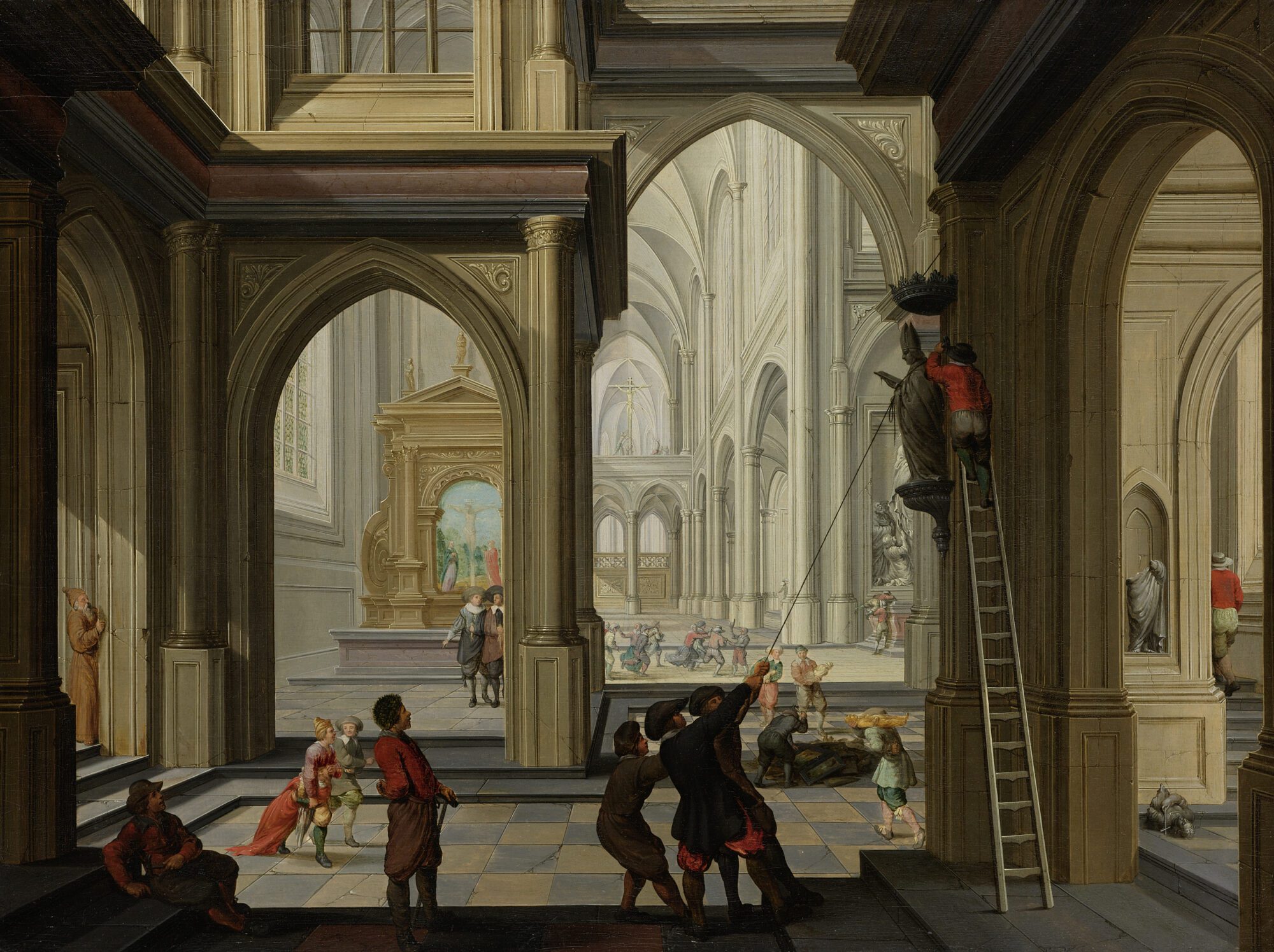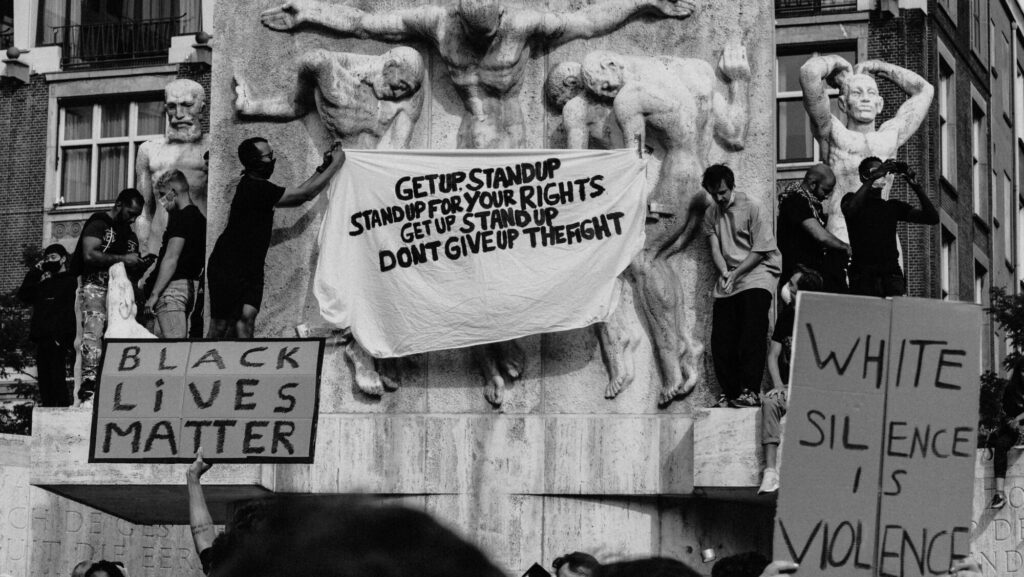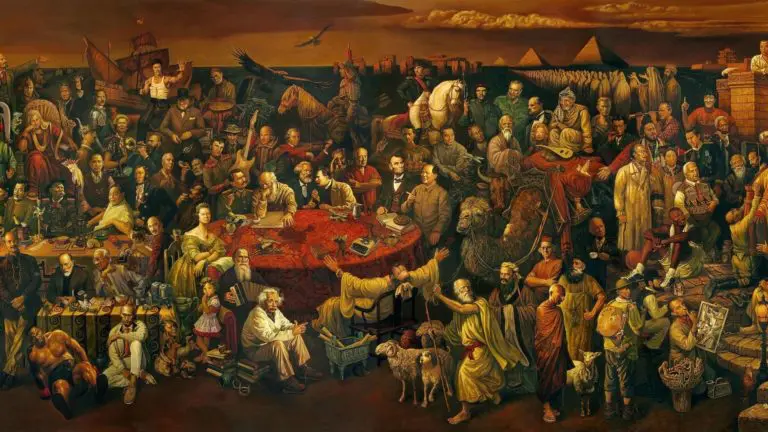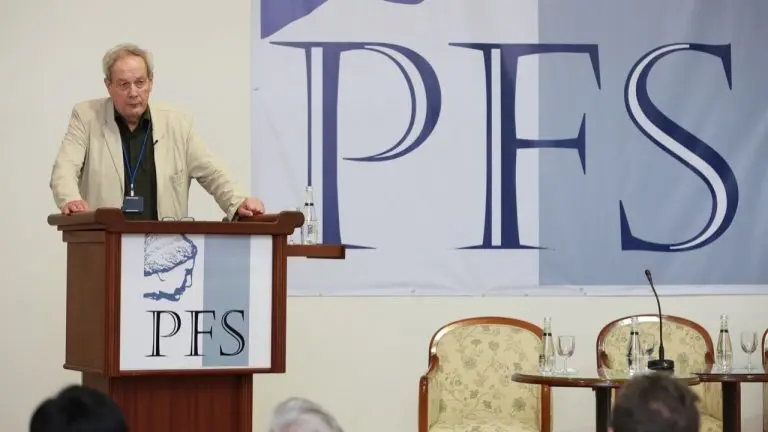The iconoclasm of the ‘Black Lives Matter’ protests in the U.S. has now also reached Belgium, where statues of Leopold II — in addition to countless other statues, such as those of Julius Caesar — have been defaced. These two very different country examples confront the cultural and intellectual historian with interesting questions, as well as troubling answers.
It is not the first time that statues of Leopold II — especially the one prominently located (since 1926) by a side entrance of the royal palace at the Place du trône — have been victims of vandalism. Like no other figure in Belgian history, Leopold II seems to embody all the colonial atrocities committed in equatorial Middle Africa, when the area of the Congo Basin first became the ‘private property’ of the king (and later of the Belgian state). Even if one dared to argue that a Belgian presence in the region brought undeniable ‘civilizing’ benefits — we need only mention railways, roads, urbanism, schools, and hospitals — it is not entirely incomprehensible why statues of a ruler (even one who did indeed oversee an economic ‘golden age’ in Belgium) are regularly smeared with red paint.
But does this now justify the demand for the demolition of his statue? This could certainly be debated at length. While there may be some valid arguments against continuing to memorialize such a controversial person in Belgian history — particularly with the public display of imposing equestrian statues — such posthumous ‘historical corrections’ should be seen as artificial, even problematic, particularly from the point of view of the historian. (This is, in fact, an old debate that has been raging in the British media for years, particularly over demands to remove statues of the ‘radical imperialist’ Cecil Rhodes.)
Admittedly, as Hegel said, “the world’s history is the world’s court of judgment.” But, depending on the context, one should really try to separate the two. Spontaneous and situationally well-grounded actions — such as when, after the overthrow of a hated dictatorship, a population wants to destroy all traces of that particular regime — are really quite understandable, psychologically speaking. And this holds true even if the historical assessment of such regimes can sometimes be completely reversed in the course of just a few years; or when later historians happily unearth new evidence or testimonies that seem to vindicate certain historical figures, and which contribute to better research and education (as has happened in the case of ‘tyrants’ like Tiberius, Nero, or Commodus, and monuments to their reigns).
But the arrogant (and, too often, ignorant) attitude so typical of the historical ‘know-it-alls’ of today — an attitude which demands the removal of centuries-old monuments of half-forgotten personalities in order to bring museum reality ‘in line’ with the fashions and worldview of modern ideologues — seems highly problematic. There is a reason why today’s iconoclasm reminds us so much of the totalitarian dystopias about which George Orwell wrote.
The vandalization of the statues of Leopold II — most of which are more than 100 years old — seem to be exemplary cases of this mentality run amok. This is particularly the case when one considers the fact that many statues are often accompanied by informative plaques that highlight the ‘dark side’ of that king’s reign. Thus, his statues are not merely to be seen as monuments that naively honour someone with a contentious legacy; rather, they are artefacts that reflect a duly considered heritage and well-processed historical assessment.
But do today’s demonstrators even read historical plaques? Here we encounter another aspect of the problem with today’s protesters: the ‘rage’ of the masses is directed not only against those silent carved ‘witnesses of the past’ who actually provide us with material for discussions about racial or social inequality; it is also — and, indeed, especially — directed against those who have nothing to do with such atrocities at all.
In Poland, for example, there was justifiable indignation over the fact that an American mob in Washington, DC, had vandalized a statue of Tadeusz Kościuszko, the Polish freedom fighter, champion against tyranny and slavery, and a ‘Founding Father’ of American independence. In Belgium, there has been a similar lack of understanding and ignorance — so that, in addition to desecrating images of the ‘oppressor’ of the Congo, Leopold II, mobs have also attacked images of King Baudouin, who brought freedom back to the Congo.
Other absurdities abound: Are the sporadic, ‘Afro-critical’ statements of Mahatma Gandhi (who was long active in South Africa) really more important than his demonstrable achievements on behalf of Indian independence? Are Winston Churchill’s critical statements about India more relevant than his fight against Nazi hegemony in Europe, and do they therefore justify the removal of his memorials? Is history — and the politics of history — now really just a competition among the aggrieved, a contest to see who is the most ‘offended,’ rather than an attempt to honour truly great historical achievements for the edification of the general public?
Admittedly, the sterile debates over who is history’s ‘greatest victim’ — which in France is already reflected in the resentful conflicts between African and Muslim citizens — are only part of the problem. They form part of a façade with which left-wing intellectuals and liberal politicians try to steer the (generally blind) hatred of the crowds in an ideologically desirable direction — and to thereafter give it some sort of legitimacy. In fact, if there is any doubt whether today’s demonstrators even bother to inform themselves about the historical work that has been going on for decades before they defile statues, we can probably go a step further and ask whether those people are even interested in knowing to whom such statues are dedicated. Their wholly uninformed campaign to smear, mutilate, or overthrow any statues in sight is probably (in historical terms) unprecedented in its ignorance and sheer stupidity.
Consider the fact that in Belgium, even Julius Caesar — whose very relevance to the modern human rights movement is really rather secondary — has become a victim of posthumous violence and a damnatio memoriae that has come 2,000 years too late. This points to the real reason for the scale of the current unrest: it is not ‘indignation’ over the allegedly ‘acceptable’ racism in an already multicultural West but rather a strange, abysmal hatred of a particular cultural identity. It is an identity that, although already badly damaged, is still conserved in the various testimonies to the past found across the West.
Today’s attacks on historical figures, therefore, do not seem to be directed against specific individual persons (even if, every now and then, they do seem to coincidentally target those whose historical ‘greatness’ is not undisputed). Rather, they seem to be directed against the history of the West as such. They are an expression of an already much-discussed ‘self-hatred’ that is found not only in the fragmented, parallel societies which increasingly dominate our large cities but also (and probably precisely) among those who, since childhood, have been imbued — by their parents’ homes, schools, media, politics, and universities — with a spirit of ‘political correctness’ and a smug ‘know-it-all’ attitude. This is the class of person who consistently gives free rein to the ressentiment they feel against their own cultural identity. It is a self-hatred that has been acquired not only through the theoretical post-modern gibberish of the seminar room and social media platforms but also through the generalized cultural iconoclasm that we have seen targeting books, busts, churches, films, paintings, and statues.
The fact that, to a large extent, the state and global media organizations also support the destruction of our history — often by pretending to ‘understand’ today’s cultural revolutionaries in accordance with a paradigm of ‘anti-authoritarian’ education — is not only a sign of their own intellectual impoverishment. Sooner or later, it will also have the same consequences as other forms of appeasement and self-abasement we have seen in the history of the West.

To be sure, European history has certainly known many other iconoclastic movements — such as the Protestant iconoclasts or the vandalism and terror of the French Revolution. But such movements still had a kind of ‘positive ideal,’ exhibiting a desire to restore ‘pure’ and original Christianity or to revive ancient republicanism. The modern vandals of today, however, those who support the supposedly ‘anti-racist’ aims of today’s ‘cultural revolution,’ are driven solely by a desire to erase their heritage. And their fury is fuelled by the disgust they feel over the simple fact that they know that their ‘identity’ depends very little on their own conscious decisions and merits. In other words, they hate to recognize that their identity depends largely on what previous generations created and left behind for us, both intellectually and physically, for better or worse. And yet the naive idea — an idea that has been part of the ‘politically correct’ creed for several years now — that we can ‘create’ ourselves anew and that we no longer need to accept any limits or ‘boundaries’ (be they political, religious, sexual, or social) on who we are is not an expression of freedom but, rather, of subliminal self-destruction.
Just as a tree whose roots have been cut off to allow for ‘uninhibited self-development’ must eventually fall, so must the individual who cuts himself off from his past. It is precisely this urge that is manifesting itself concretely, everywhere, before our very eyes today. The prospect of our civilization staggering mindlessly in such a direction — towards a world in which statues of Gandhi are torn down while, at the same time, new statues of Lenin are erected (as we have seen in Gelsenkirchen) — can only make us shudder in terror.






